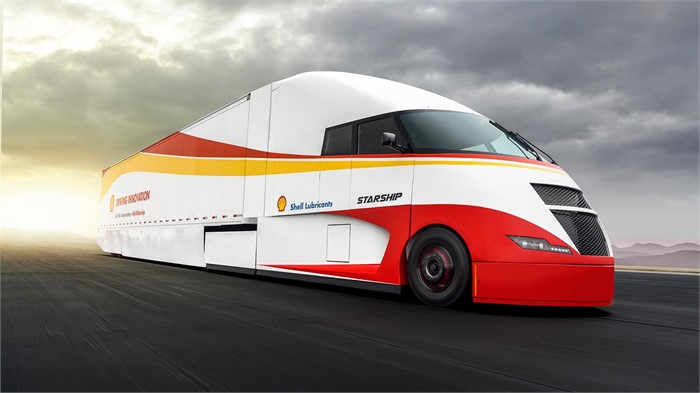A new truck that has been designed specifically to be as economical and aerodynamic as possible is set to take on a mammoth journey across the US, hauling a heavy load to prove that there are still changes that can be made to improve the sustainability of fossil-fuel-powered HGVs.
The Starship truck was created as part of a collaboration between Shell Lubricants and the AirFlow Truck Company. The impending test will see it take to public roads and attempt to prove that the freight-tonne fuel efficiency it can achieve is second to none.
The aerodynamic elements of the truck are undeniably impressive: the cab in particular has a bullet-like profile that allows it to slip through the air while creating very little drag in the process.
It is not just static elements of the vehicle that are tuned towards fuel efficiency; there are also a number of shutters which can operate autonomously to redirect the flow of the air according to different driving conditions and operator inputs.
Light & Strong Cab
The cab itself is fashioned almost entirely from carbon fibre, which means it is much lighter than equivalent metal cabs while also being suitably strong and durable to cope with life on the open road.
Even the axles have been adapted to reduce fuel consumption, specifically when the truck is powering up an incline. Tyre pressure is constantly monitored, but rather than requiring drivers to make manual adjustments when this falls out of acceptable limits, inflation occurs automatically to make things even more convenient.
Of course, traditional diesel is not the only energy source that the Starship relies upon to get from A to B, as it features an array of solar panels on the roof. Drawing power from the sun, these panels are used to keep the onboard batteries charged up and allow all of the elements which rely on electricity to operate effectively without needing to eat into the supply of fossil fuel.
Eco-friendly Truck Projects
There are a number of eco-friendly truck projects under way at the moment, with electric car maker Tesla responsible for perhaps the most high profile of the current developments. However, the Starship is an alternative to many of these because it sticks with a standard diesel engine and looks to make optimisations in other areas rather than switching to a zero-emissions power train.
This is a double-edged sword, since it means that even with efficiency savings, this HGV will still emit harmful gasses and particulates. On the other hand, it will be able to take advantage of the existing refuelling infrastructure and have a much greater range than any of its all-electric counterparts.
The balancing act between practicality and sustainability is one which many organisations are trying to perfect at the moment. This aerodynamic design is still an important step forwards for the industry as a whole, since even electric trucks will need to be as slippery as possible so that they can offer the maximum available range to operators.
